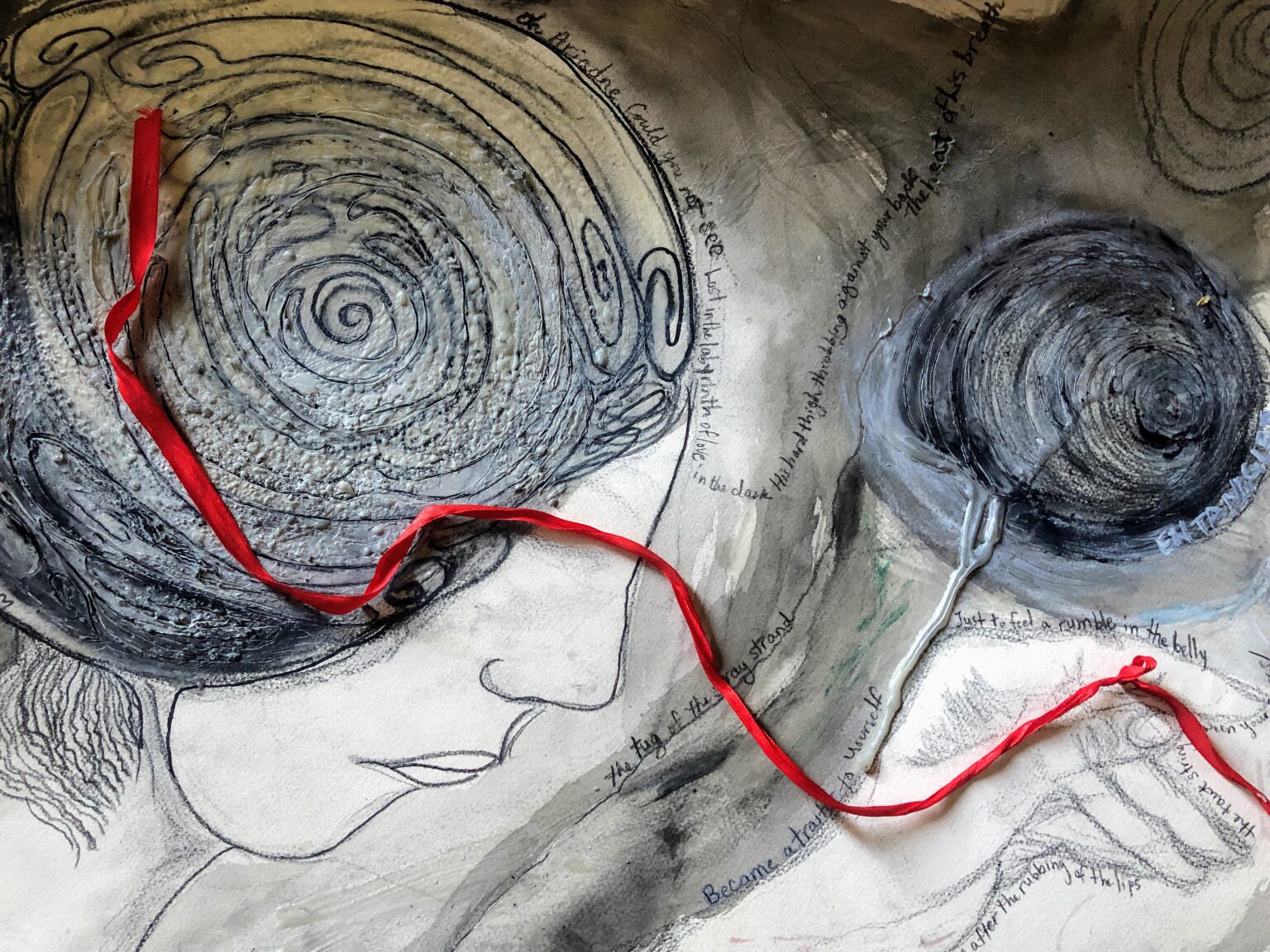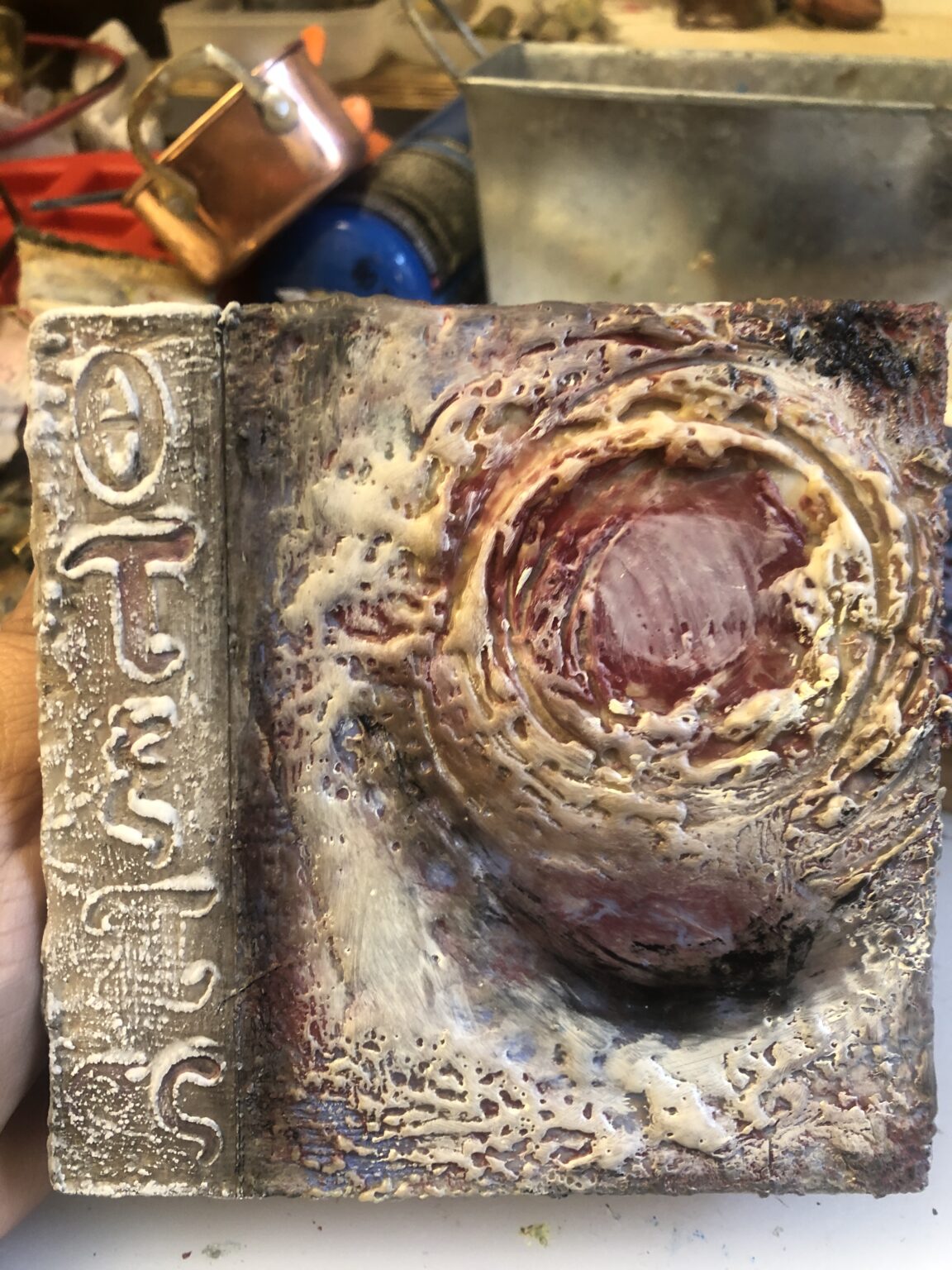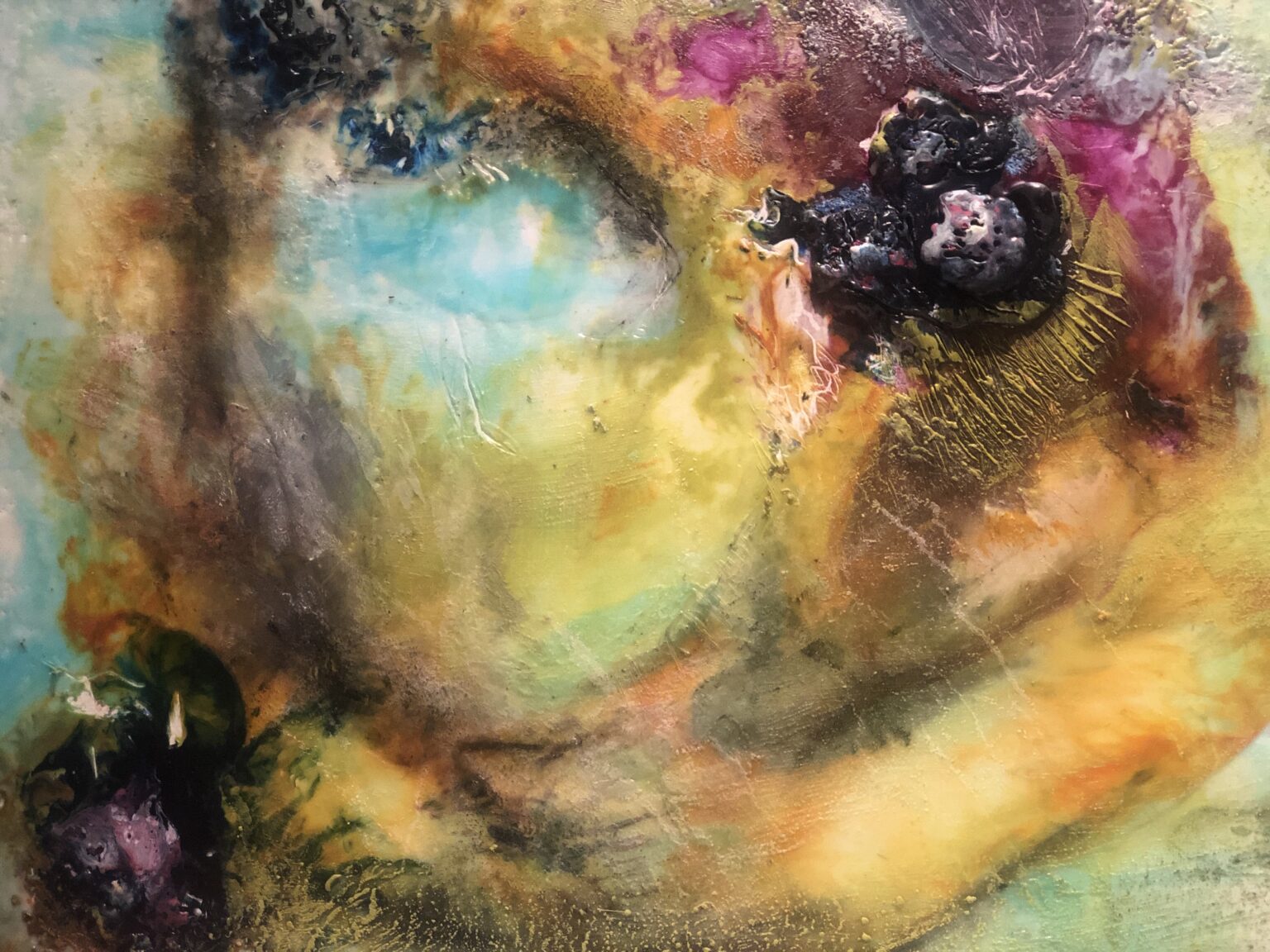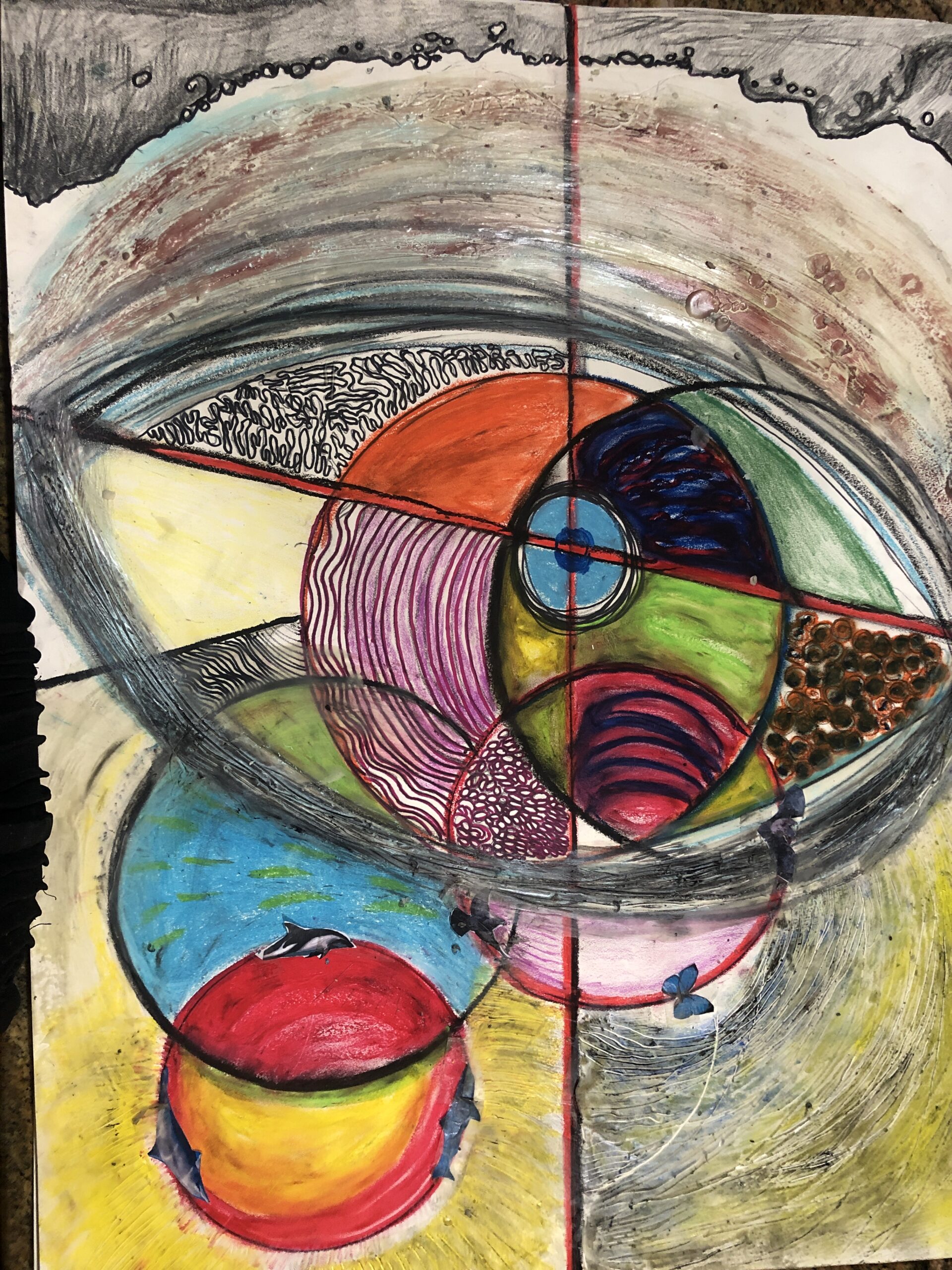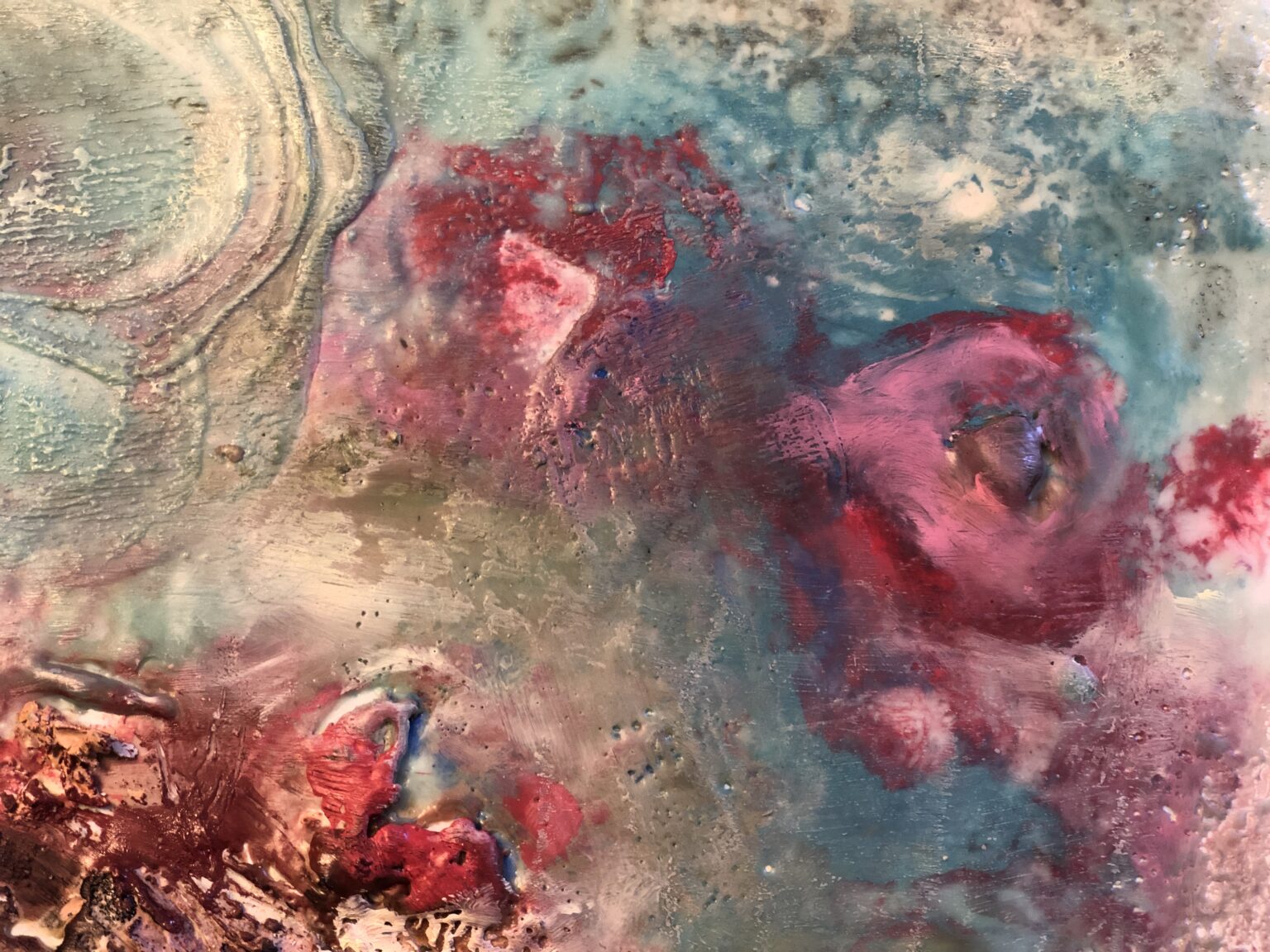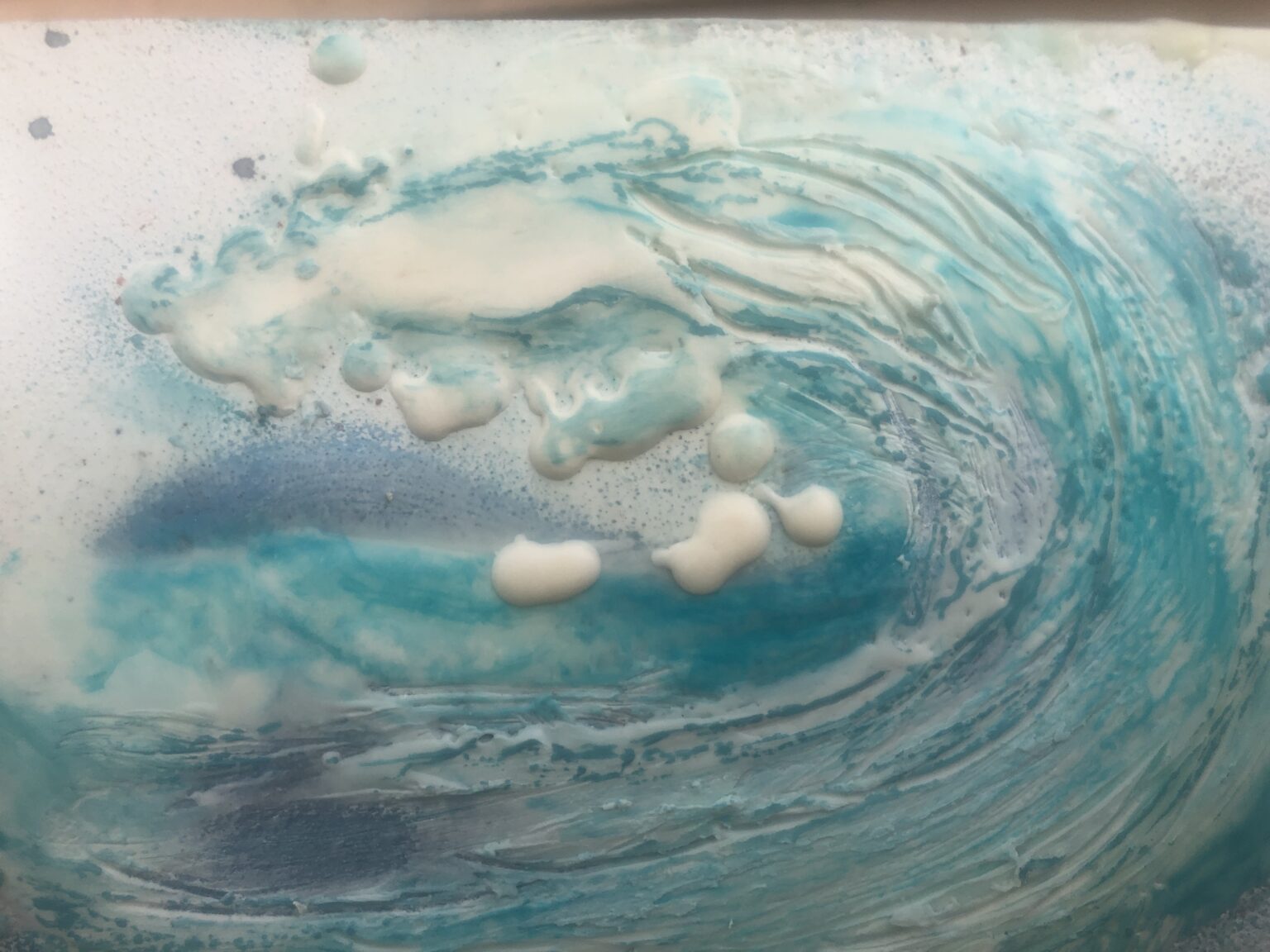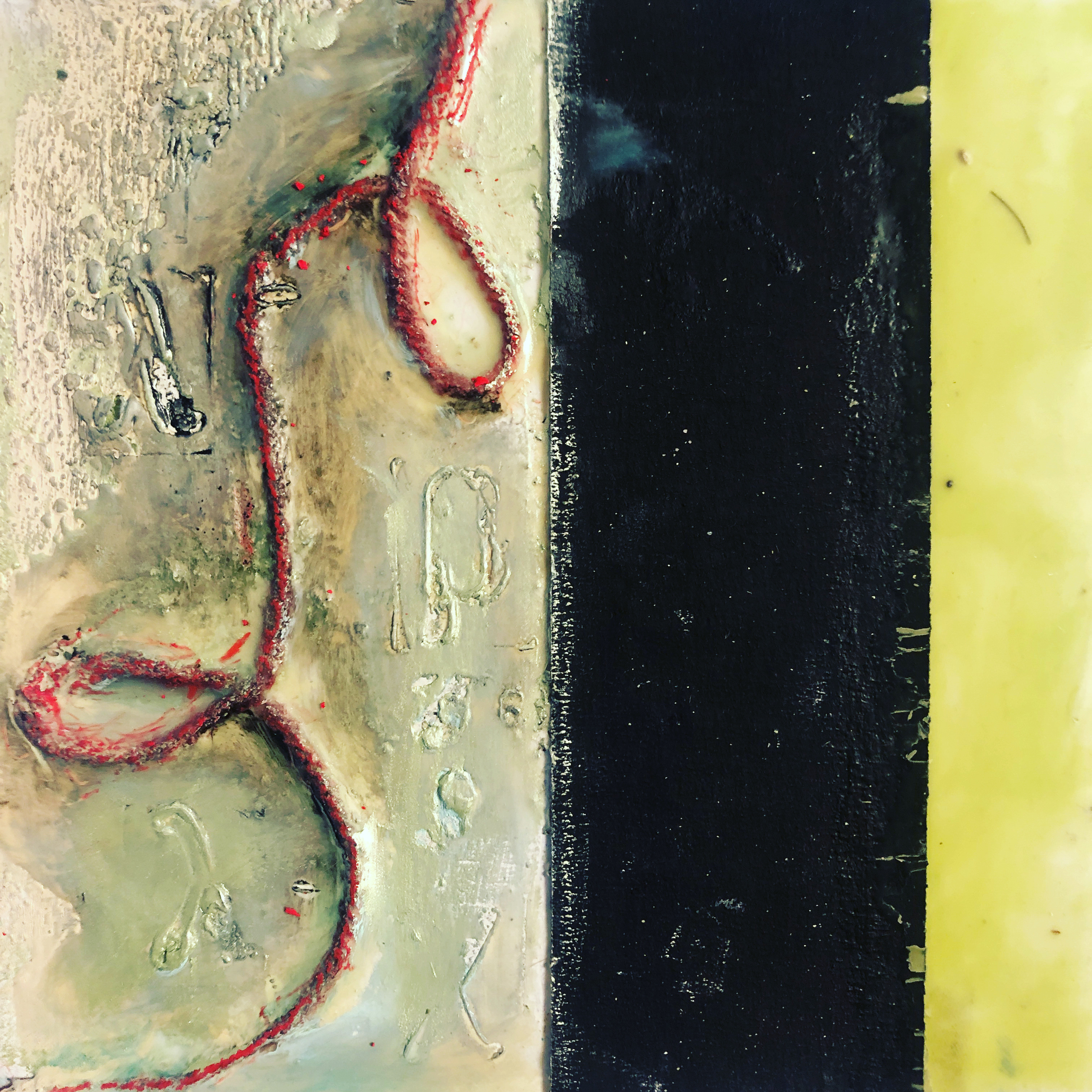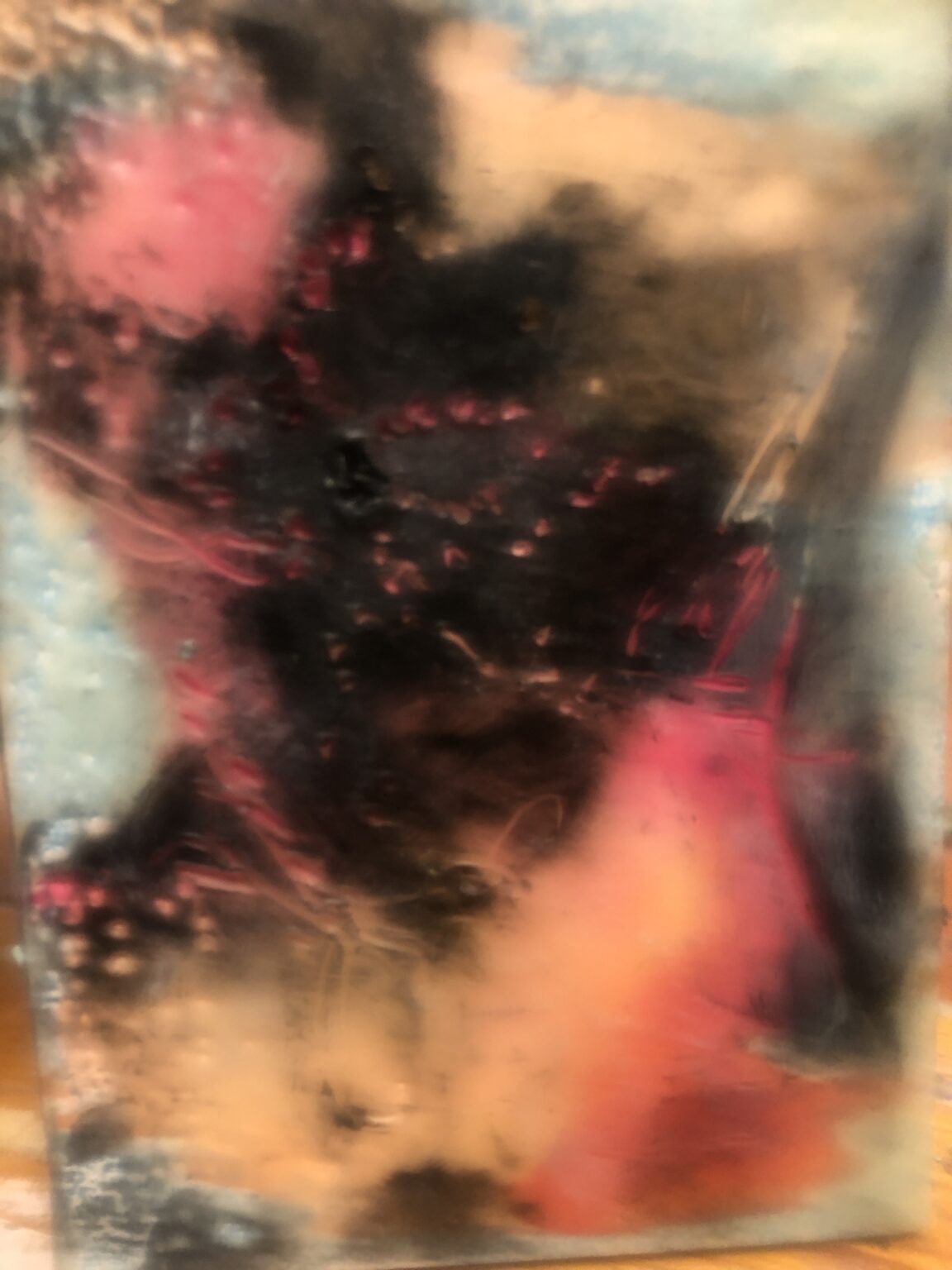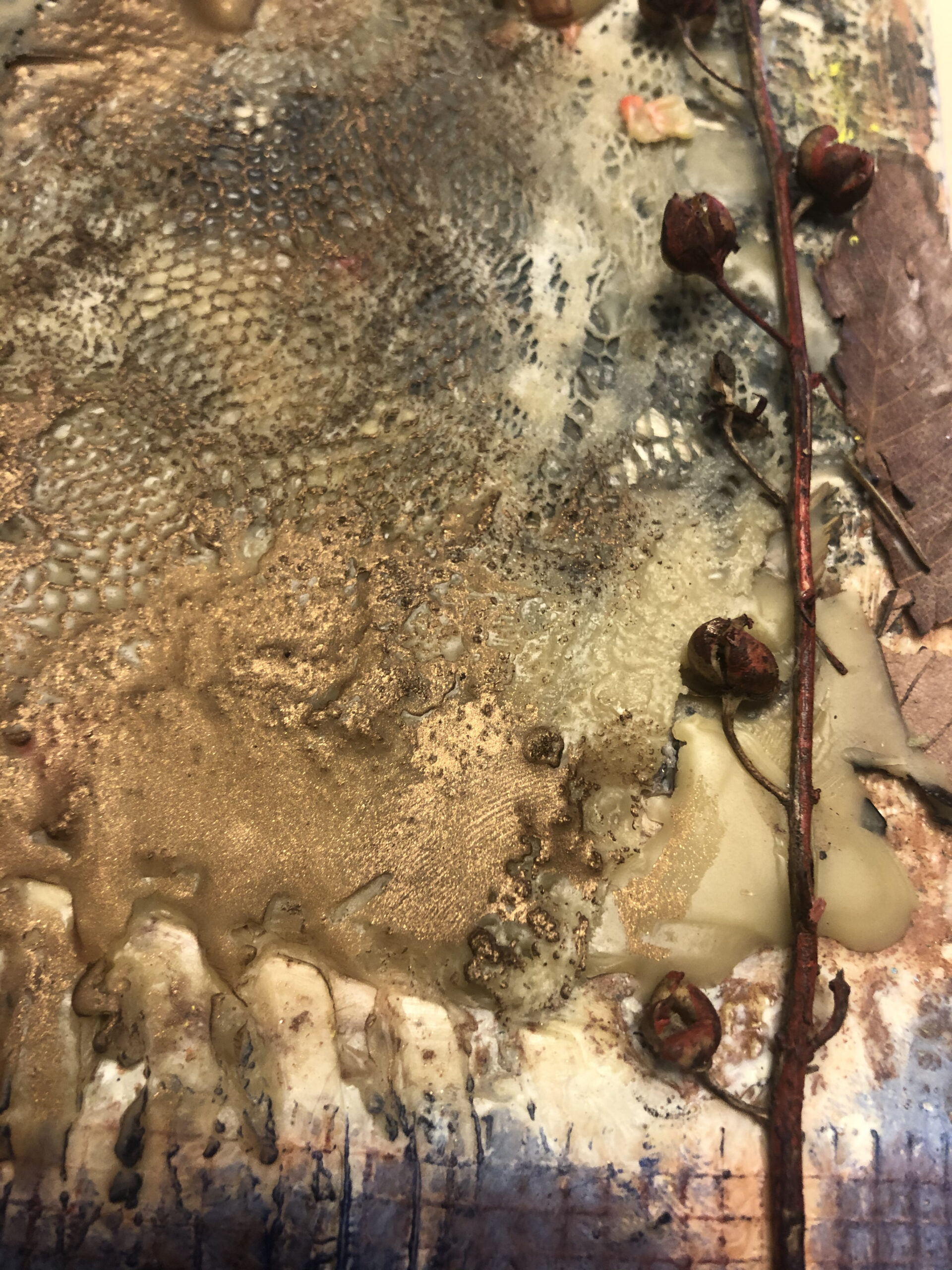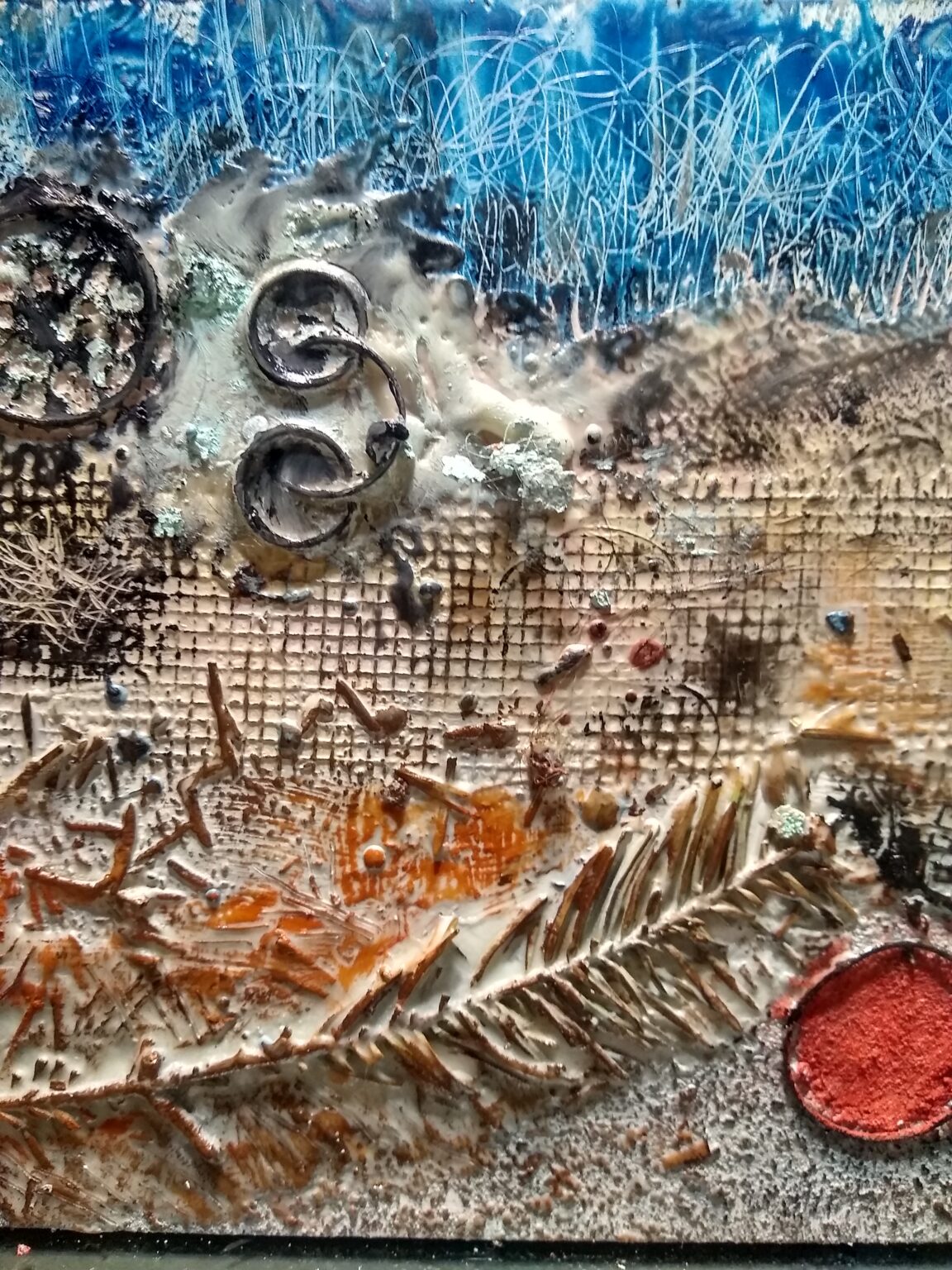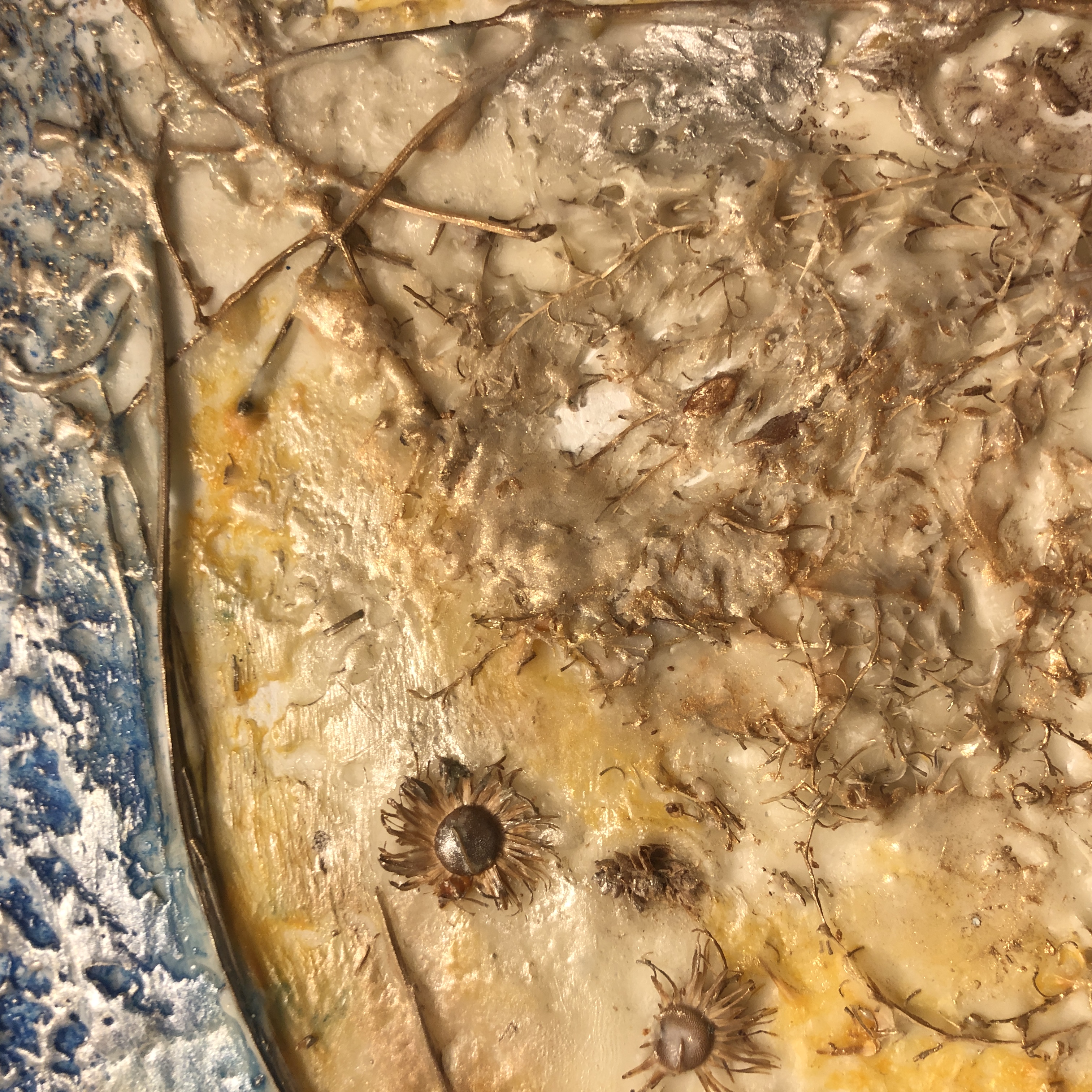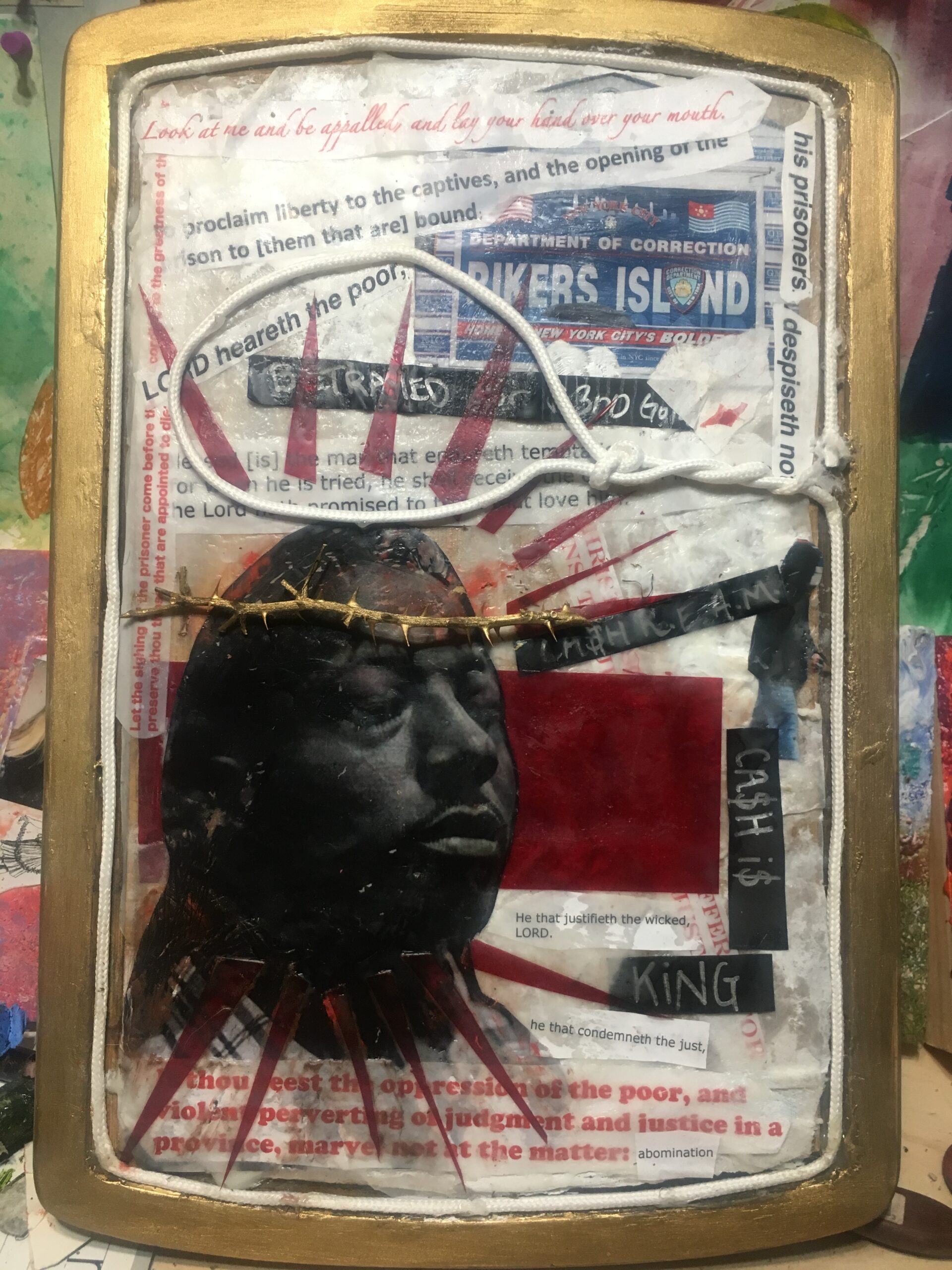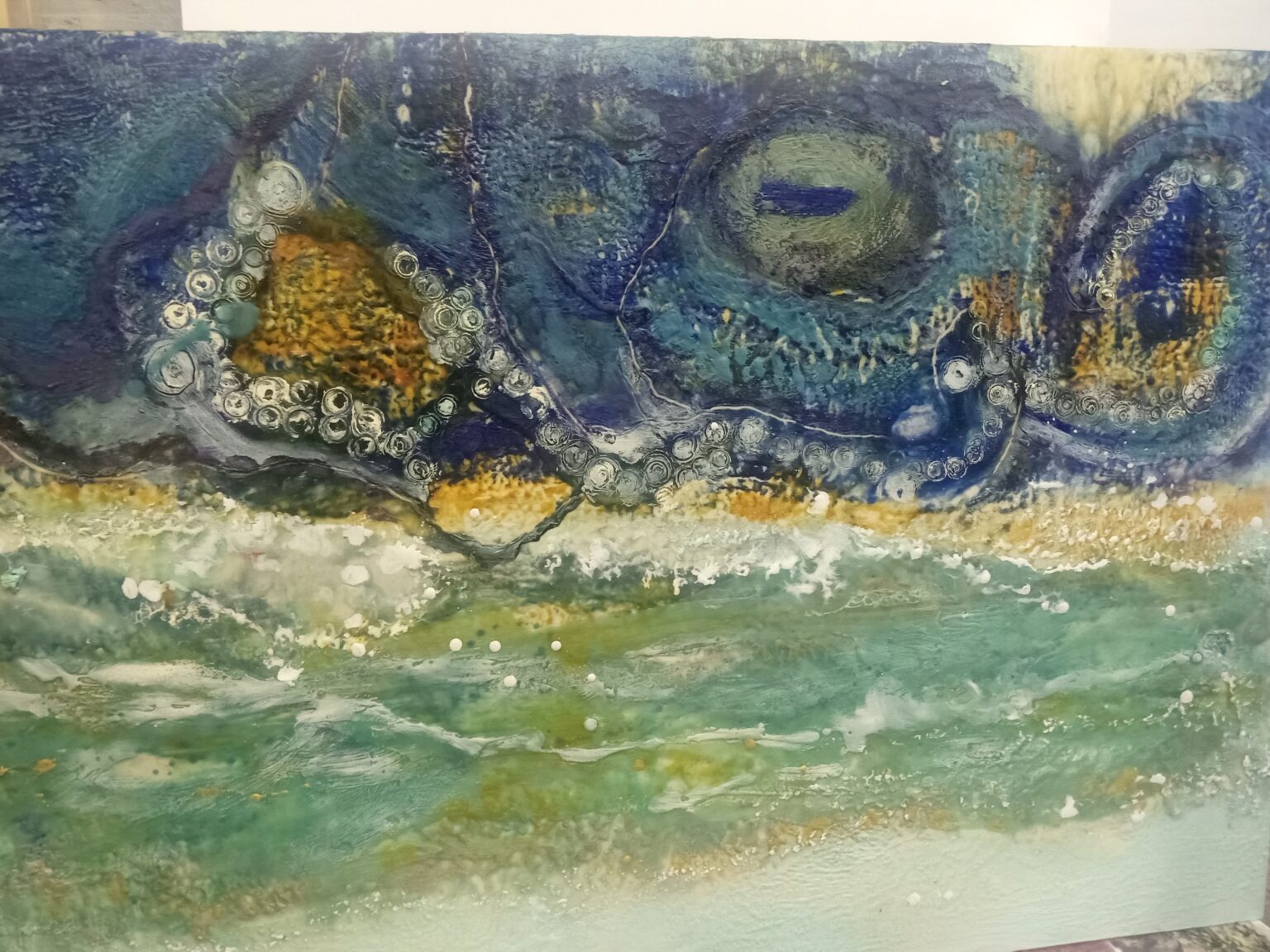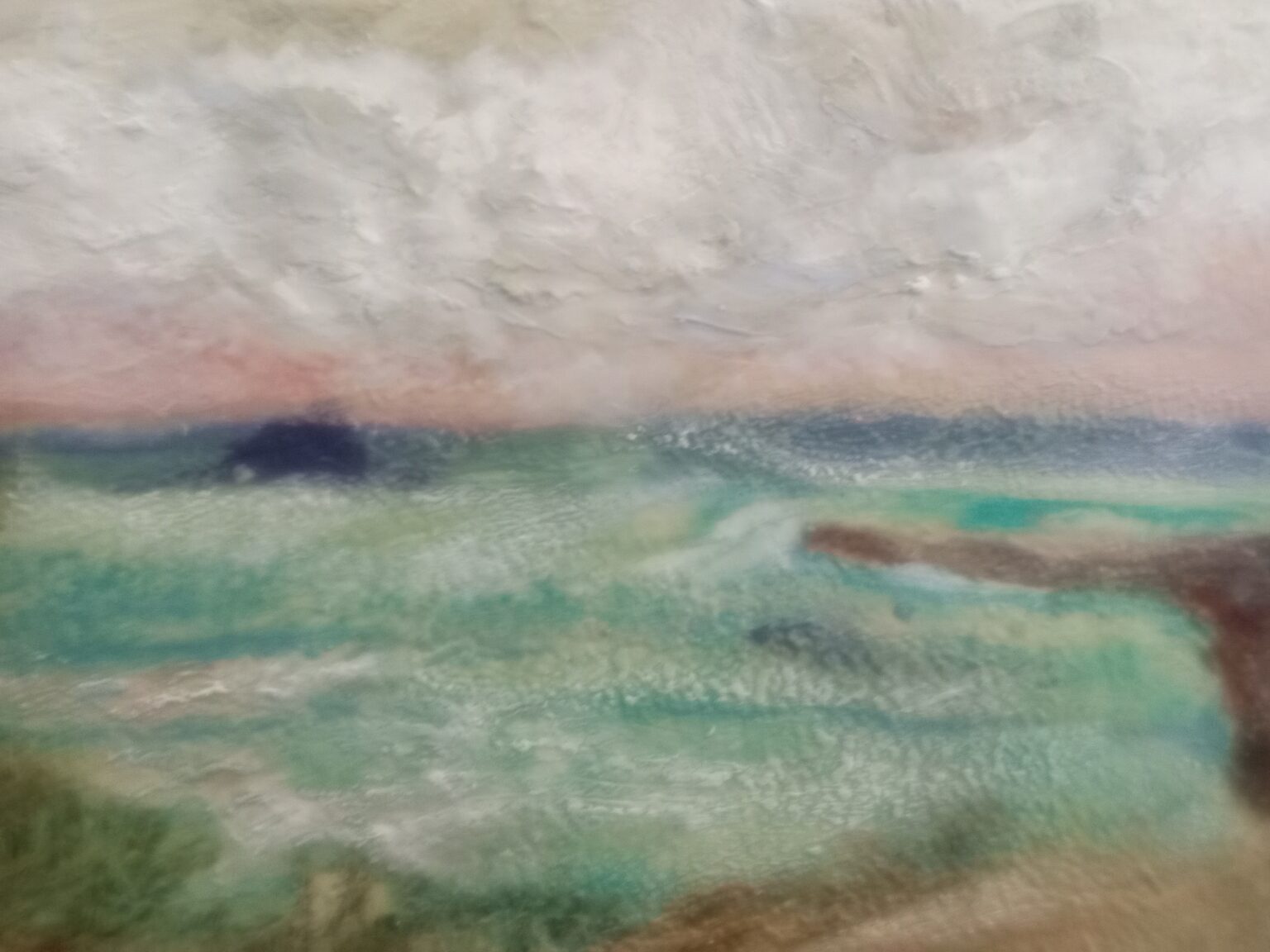Encaustics
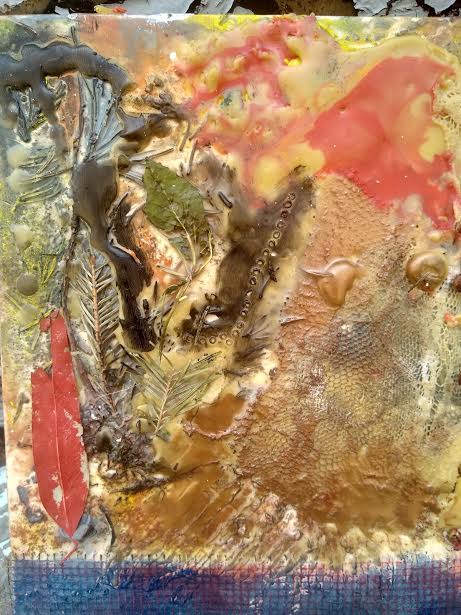
Encaustic is one of the most ancient painting techniques. It refers to the act of burning pigments into a mixture of beeswax and Damar resin. “En-kausticos” comes from the Greek meaning to “burn into.” The technique consists of preparing a porous material, usually wood, with a medium of wax and damar resin. (Damar is a specific pine tree whose sap is just the right consistency to mix with the wax when warmed, not too hard, not too soft). The medium is warmed in vats under fire and then pigment is mixed into the wax which the artist paints directly onto the surface. The pigment must be warmed and then the various layers fused by more heat.
Encaustic technique originated in Egypt. Greek boat makers and engineers waterproofing their ships’ hulls with pitch or tar in wax. It traveled over to the arts because of its ability to keep pigment vibrant. Encaustic technique served two functions: to preserve and to decorate. This is why most Greek statues and buildings made of stone were painted. And how was the paint applied? En-kaustikos of course! The pity is that, while encaustic was the medium in use throughout the span of the ancient world, very little evidence of it survives. There is one notable exception– the Fayyum mummy masks on exhibit in the Metropolitan Museum of Art and in London. These mummy portraits would wrap the faces of the upper-class noblemen and women in the Hellenistic Period in Alexandria, Egypt in the 3rd century AD and served as memorials.
Encaustic fell into disuse as it was cumbersome. But in the 20th century, what with the ease of using hot plates and extra-powerful blow torches, encaustics are making a comeback. The 20th century has seen a rebirth of encaustic on a major scale. It is an irony of our modern age, with its emphases on advanced technology, that a painting technique as ancient and involved as encaustic should receive such widespread interest.
Why? Because with all things ancient, it signals a return to the elemental, the raw and the natural. The ancients in their minimalism spoke in products and processes that appear post-modern and quite abstract.
Encaustic’s versatility also attributes to its popularity. It can be combined with painting, collage, mixed media. It acts like glue or medium, but with the advantage of making paper transparent. It takes well to toner transfers. Secondly, it appeals to the tactile senses. The smell of the wax, the warmth of it gives the artist a personal connection to the medium. There is nothing like the warm feeling of rubbing your fingers over the wax, adding pigment sticks to bring out the fissures and crannies. Thirdly, it allows for multi-dimensionality and texture. Because the medium can be built up in hundreds of layers, encaustic painting is able to be texturized in a thousand ways. In fact, some encaustic artists actually sculpt pieces from the medium itself. The medium gives the pigment a rich optical effect.
That’s another thing about encaustic art making: it combines both the mind and the body in a harmonious whole. You need the body to create encaustic, whether by heating and mixing the medium, rubbing the pigments, feeling the textures. It is very therapeutic in this regard; bridging both left and right brain hemispheres.
ENCAUSTIC PAINTING WORKSHOPS
As an exhibited artist in NYC, I conduct beginner’s workshops in encaustic painting and landscape painting in acrylics, egg tempera, watercolor and other media in my studio in LIC/Astoria, NYC and on the Cyclades in the summer. Workshops average a maximum of 12 participants. All supplies and light refreshments provided.
OVERVIEW: Participants will create an encaustic painting of 4X4 on wood panel. The workshop will be complemented by a talk and presentation that will review the history, techniques and significance of the medium
Objectives:
-to gain an introductory understand of encaustic and associated tools
– to understand elements of composition, collage, contrast,
-to learn different sculpting techniques using the wax medium
-to learn fusing through hot gun and cold wax
DURATION: 1-2 hours
Price: 60 Euro in the Cyclades (August)
$50 for 1.25 hours in Astoria/LIC (September-June)
You can enjoy this workshop along with many others as part of a week-long retreat in the Cyclades.
The same workshop is available in Astoria/LIC from September to May at my artist’s studio in Astoria (near Astoria Park).
Virtual workshops can also be arranged via Zoom at $40/hour
Contact
Interested in purchasing a piece? commissioning a work? setting up a workshop? use this form below to contact me
